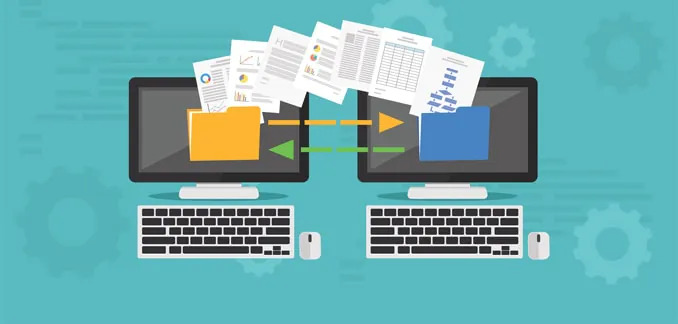Electronic Data Processing: Revolutionizing Data Management
In today’s fast-paced digital world, managing vast amounts of data efficiently is a critical priority for businesses, governments, and organizations. Electronic Data Processing (EDP) has emerged as a key solution, enabling organizations to handle, analyze, and store data accurately and swiftly. This article explores the concept, importance, and applications of EDP, as well as its benefits and future trends.
What is Electronic Data Processing (EDP)?
Electronic Data Processing refers to the automated processing of data using computer systems and software. Unlike manual data processing, EDP leverages technology to perform operations such as data entry, sorting, analysis, and storage with minimal human intervention. Common examples of EDP include payroll processing, inventory management, and financial record-keeping.

Why is EDP Important?
- Efficiency: Automation reduces the time required to process large datasets, allowing organizations to focus on strategic decision-making.
- Accuracy: EDP minimizes human error, ensuring that data-related operations are reliable and precise.
- Cost-effectiveness: By automating routine tasks, organizations can lower operational costs associated with manual labor and repetitive processes.
- Scalability: EDP systems can handle growing data volumes, making them ideal for businesses experiencing rapid growth.
Key Components of Electronic Data Processing
- Hardware: Computers, servers, and storage devices form the backbone of EDP systems, enabling data input, processing, and retrieval.
- Software: Specialized applications such as database management systems (DBMS), analytics tools, and enterprise resource planning (ERP) software facilitate efficient data processing.
- Data: Structured and unstructured data are the core inputs for EDP systems, ranging from text files to multimedia content.
- Personnel: While EDP is automated, IT professionals and data analysts are essential for managing, maintaining, and optimizing these systems.
Applications of EDP
Electronic Data Processing finds applications across various industries:
- Banking and Finance: Automated transaction processing, fraud detection, and financial reporting.
- Healthcare: Managing patient records, scheduling appointments, and analyzing medical data.
- Retail: Inventory management, sales tracking, and customer relationship management.
- Manufacturing: Supply chain management, quality control, and production scheduling.
- Government: Census data analysis, tax processing, and public record management.
Benefits of Electronic Data Processing
- Improved Productivity: EDP streamlines operations, freeing up resources for more value-added activities.
- Enhanced Security: Modern EDP systems incorporate robust encryption and authentication protocols to protect sensitive data.
- Data Insights: Advanced analytics capabilities enable organizations to derive actionable insights from their data.
- Eco-friendliness: Reduced reliance on paper-based processes contributes to sustainability efforts.

Future Trends in EDP
- Cloud Computing: Cloud-based EDP solutions offer scalability, flexibility, and remote accessibility, making them increasingly popular.
- Artificial Intelligence (AI): AI-driven tools enhance data analysis, predictive modeling, and decision-making.
- Blockchain Technology: Blockchain ensures data integrity and transparency, particularly in industries requiring secure and auditable records.
- Internet of Things (IoT): IoT devices generate vast amounts of data, necessitating advanced EDP systems for real-time processing.
- Big Data Analytics: With the exponential growth of data, EDP systems are evolving to handle and analyze massive datasets efficiently.
Conclusion
Electronic Data Processing has transformed how organizations manage their data, providing unparalleled speed, accuracy, and scalability. As technology continues to evolve, EDP will play a pivotal role in shaping the future of data-driven decision-making. By embracing innovations such as AI, cloud computing, and big data analytics, businesses can unlock the full potential of their data and gain a competitive edge in the digital age. For organizations looking to stay ahead, investing in robust EDP systems is not just an option but a necessity.